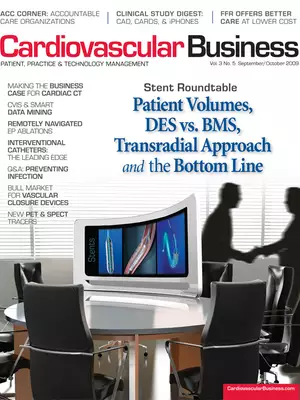Cardiovascular Business invited five luminaries in the field of interventional cardiology to engage in a discussion about stents, including the choice to use PCI over CABG, DES versus BMS, a specific stent over contracting and the radial approach versus the femoral approachalways with an eye toward running a better practice.

